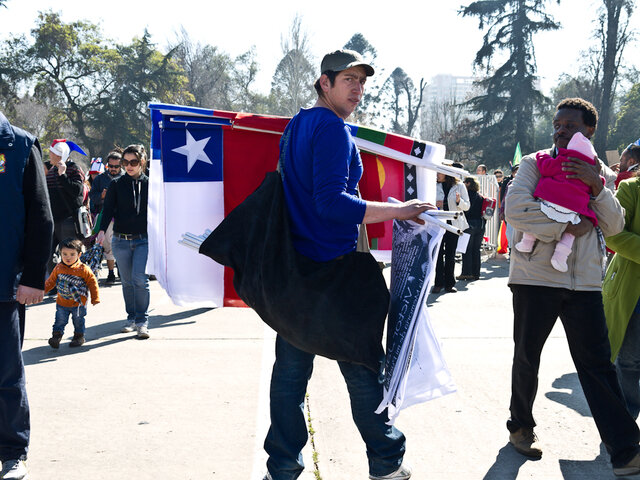
Introduction: A Strategist in the Ruins of Defeat
The fall of the Soviet Union in 1991 was not merely a geopolitical event but resulted, globally, in a profound crisis in revolutionary thought. Amidst the ruins of socialist hope scattered across a neoliberal landscape, one encounters Daniel Bensaïd, a Marxist who refused to accept defeat without extracting lessons from historical setbacks. As a prominent intellectual within the French Ligue Communiste Révolutionnaire (LCR) and a prolific writer, Bensaïd reignited the debate on communist strategy at a time when the very notion was often ridiculed or dismissed. His Marxism was not a set of rigid dogmas but rather an orientation—a wager on the potential for rupture, shaped by the tragic memories of past revolutions and the pressing need for battles in the present. For Bensaïd, communism was not an endpoint but a strategic process, an emancipatory project that must be continually reinterpreted in response to changing circumstances. His legacy lies in the revival of the concept of strategy as a political art—one that is temporary, contingent, organised, and inherently revolutionary
I. Strategy as Historical Recomposition
Bensaïd starts from a sense that the Left has not merely lost battles but forgotten them too. “We have not only lost battles,” he says, “but also the memory of battles lost and won.” [^1] His initial strategic project, therefore, is the recovery of revolutionary memory—not nostalgia, but a way of remembering lost possibilities.
Instead of canonising the October Revolution or dropping it, Bensaïd argues that it should be left as a contradictory legacy: “We must neither canonise nor cancel the October Revolution. We must inherit it as a contradictory legacy, a laboratory of strategic hypotheses.” [^2] This dialectical transmission of Bolshevism as a lesson and warning is at the heart of Bensaïd’s strategy. It is not a matter of copying Leninist forms but of relearning the strategic art of invention in completely changed conditions.
II. The Temporal Turn: Breaking with Historicist Fatalism
Bensaïd’s most significant theoretical contribution lies in his rethinking of political temporality. He challenges both reformist gradualism and insurrectionary immediatism by constructing a strategic model that embraces a nonlinear, messianic conception of time. Influenced by Walter Benjamin, Bensaïd rejects the notion of history as a linear progression and emphasises the potential for rupture, interruption, and bifurcation.
“Politics is the art of the event,” he asserts, “of interruption, of bifurcation.” [^3] Revolution is not simply the realisation of objective necessity; rather, it constitutes a risk taken amidst the unforeseen. This understanding of temporality enables Bensaïd to conceptualise revolution as a possibility, distinct from both utopia and determinism. Revolution acts as an interruption to the continuity of the mundane, rather than its culmination. This line of reasoning prompts Bensaïd to reconsider strategy as a gamble, as Pascal has suggested: an action undertaken in the face of uncertainty, yet one that remains guided by reason, prudence, and commitment. He states, “To be revolutionary is to act in the interval, to seize the moment when time is out of joint.” [^4]
III. A Return to Lenin—Without Leninism
One of Bensaïd’s most difficult claims is the call for a “return to Lenin without Leninism.”[^5] This is not a call for the restoration of a bureaucratic system of centralised party politics but for recapturing Lenin’s strategic imagination in facing new historical conditions.
Bensaïd argues, “Lenin was not a strategist of revolution in general” (…) “but of a revolution in a backward country in a moment of world war.” [^6] Today’s assignment is not to repeat Lenin’s conclusions but to take his method: a fierce concentration on the conjunctural situation, a commitment to tactical flexibility, and a firm commitment to revolutionary breaks.
It is a vision that enables Bensaïd to assert the need for organisation without adopting the vulgar and distorted dogmas, peddled by the CP tradition, of “Leninism” as a model. The revolutionary party, in his view, is a hypothesis of strategy and not a metaphysical model. It has to be judged on whether it can organise revolutionary agency, act in crisis, and anticipate rupture—rather than on whether it is in accordance with the canonical model.
IV. Contrary to the Attrition Strategy
One of Bensaïd’s most incisive criticisms pertains to the strategy of attrition (guerre de position), particularly as it was conceptualised and implemented by a significant portion of the postwar European Left, especially within the Eurocommunist framework. In recognition of Gramsci’s influence, Bensaïd warns against reducing Gramsci to a mere form of parliamentary realism.
“In the name of hegemony, the left has often abandoned conflict; in the name of realism, it has abandoned rupture.” [^7] The prolonged engagement with institutions, initially perceived as a necessary adaptation, often serves as a façade for tactical surrender. This approach has resulted not in revolution but rather in assimilation into the bourgeois system.
Bensaïd expresses scepticism about the appeal of spontaneous revolution and gradual electoral reform. He posits that strategy must encapsulate a dialectical tension between preparation and rupture, as well as between position and manoeuvrability, all while being firmly anchored in a realistic analysis of power relations. He believes that a radical transformation of the state cannot occur without a disruption of the constitutional and legal order. “No revolution has ever been made without breaking laws, without upsetting the legal order.” [^8]
V. Organisation as Strategic Hypothesis
Amidst the horizontalist upheavals, re-emerging anarchist tides, and frustration with institutionalised forms, Bensaïd emphasises the requirement for political organising—not as an issue of coercion, but as a pragmatic necessity of efficacious strategic action.
“I have never been a party fanatic,” he claims in his political memoir, An Impatient Life. “But I have always defended the necessity of organised political will.” [^9] The revolutionary party for Bensaïd is not an object of fixation. Instead, it is a tool, a provisional and flexible hypothesis, and a means of bringing revolutionary strategy together over time.
In opposition to the anti-organizational thrusts of autonomism and anarchism, Bensaïd argues that without coordination, without memory, and without continuity, revolt is episodic and finally reabsorbed. He is adamant, however, that organisation needs to be open, democratic, and flexible—it cannot stiffen into hierarchy or dogma.
VI. Strategic Hope and the Revolutionary Wager
Bensaïd’s theory reaches its pinnacle in the concept of the wager. Strategy should not be perceived as a science of the inevitable; rather, it should be understood as a political practice rooted in possibilities. He asserts, “To be a revolutionary today (…) is to wager on the possibility of another world in a world that declares itself without alternatives.” [^10] This wager is not absurd; it represents a rational gamble within the context of uncertainty.
In the face of disaster—be it ecological catastrophe, imperial warfare, or capitalist brutality—must revolution be reaffirmed as a risk rather than a guarantee. “Politics is not the art of prediction,” Bensaïd asserts, “but of the possible. The possible is not what is probable, but what we make possible.” [^11]
Bensaïd reminds us of the fundamental essence of Marxism—not merely as a form of crude economic determinism, but as an approach centred on practice, a theory of liberation, and a strategy for radical transformation. His work is characterised not by the creation of new slogans but by his reclamation of the very possibility of communist political practice in the 21st century.
Comrade Bensaid: A Communist for Catastrophic Times
Daniel Bensaïd’s contribution to the question of communist strategy is both existential and theoretical. He does not provide final blueprints, rigid dogmas, or redemptive ideologically framed plans. Instead, he offers something far more essential amidst disintegration: a strategy, a sense of context, and a commitment to liberty. In the wake of the 20th century’s ruins, Bensaïd resisted the dual temptations of nostalgia and despair. He insisted that the future must remain open, in flux, and contested. His legacy should not be embalmed but actively engaged with. As capitalism seems invincible and the prospect of an apocalypse appears more plausible than the end of capital itself, Bensaïd’s voice resonates: “We are no longer in the time of promises, but of urgency. The urgency to act, to think, to organise, to rebel.” [^12]
It would be unjust to Bensaïd if we did not extend our analysis to the current scenario in India, where the parliamentary space for the left has diminished and the younger generation perceives left parties as relics of the past. In the following section, we will attempt to formulate a strategic plan informed by Bensaïd’s insights.
Bensaïd in the Time of Hindutva: Strategic Thought for a Besieged Democracy
Daniel Bensaïd’s strategic rejuvenation is of critical importance in the post-Cold War West, but it assumes an even more urgent importance in India—where the Hindutva march has redrawn the terrain of conflict. The Sangh Parivar’s capture of state machinery, the consolidation of Hindu majoritarianism, and the use of religion to serve capital and imperial interests are not temporary problems; rather, they are symptoms of a deep strategic disorientation affecting the Indian Left.
In this time of a catastrophic surge from the far right, Bensaïd’s writings resonate with renewed significance. He does not provide ready-made solutions but instead offers tools for orientation—a call for historical memory, a rejection of linear determinism, and a vigorous defence of revolutionary will as a gamble. What is needed is not orthodoxy or nostalgia but the tactical rearming of communists at a moment when fascism dons saffron robes and “Jai Shri Ram” slogans fill the air alongside acts of lynching.
To situate Bensaïd within the context of India is not merely to introduce theoretical concepts; rather, it is to translate the ongoing struggles. It involves the reclamation of the communist art of strategy in a landscape that is deeply fractured by caste, religion, and the impacts of neoliberal dispossession.
I. Rupture, Not Accommodation: The Bankruptcy of Parliamentary Caution
The Indian Left, particularly its leading political parties, has predominantly adopted an attritionist strategy—a gradualist approach rooted in parliamentary communism and Gandhian ethics. However, faced with the formidable within the context of the RSS-BJP trajectory, this strategy has proven to be vastly inadequate. The timidity associated with parliamentary norms, opportunistic conciliation and reliance on constitutional principles have failed to curb the growing popularity of Hindutva, let alone establish a counter-hegemonic movement.
Bensaïd’s critique of Eurocommunism holds particular relevance in this context. Similar to the Western communist parties that were drawn into the embrace of bourgeois democracy under the pretence of a “hegemonic strategy,” the Indian Left faces a comparable dilemma—caught in a position of disarmament while ostensibly upholding the “idea of India.” As Bensaïd cautioned, “In the name of realism, the left has abandoned rupture.” [^13]
Defending the progressive ethos of Constitution is not merely a strategy; it is a position. While it is essential, it is not sufficient on its own. Hindutva represents more than just an electoral challenge—it is a fascistic movement grounded in mass mobilisation, ideological indoctrination, and violence. To effectively counter this threat, we need more than just slogans and coalitions; we require a revolutionary counter-offensive that is built on popular organisation, tactical imagination, and strategic audacity.
II. Time Out of Joint: Strategic Temporality in a Fragmented Society
India’s experience of time is fractured. The rural and urban populations, the Adivasi and the metropolitan elite, as well as the Dalit and the Savarna, all perceive time as being out of joint. The Modi regime has exploited this temporal dissonance—infusing everyday life with spectacle, myth, and urgency, while simultaneously enacting a slow and brutal transformation of the state.
It is at this juncture that Bensaïd’s cartography of time provides profound insights. He contends that revolution is not merely a matter of “ripening conditions”, but rather about seizing “time out of joint”. The revolutionary subject must act when contradictions are in conflict, rather than waiting for economic determinism to indicate that the moment is opportune.
For Indian communists, this necessitates a departure from the stageism that has long stifled strategic initiative—waiting for the ‘consolidation of democracy’, the ‘maturity of the bourgeoisie’, or for ‘the appropriate time’. That moment will never arrive—it must be enforced through intervention, articulation, and rupture as the politics is all about the art of possibility.
In an era where fascism seems ever-present, maintaining hope is a strategic necessity. Communists must embrace the role of artists of disruption, rather than mere prophets of historical inevitability.
III. Opposition to Spontaneism and Electoralism: Reconstructing the Party as a Strategic Proposition
The decline of major communist parties in India, most notably the CPI(M) in West Bengal, has led to a dual phenomenon of electoral dissolution and spontaneous despondency. On the one hand, some individuals view the voting process as the sole arena for conflict, aligning their discourse with the prevailing liberal consensus. On the other hand, there are those who retreat within a horizontal framework, rejecting organisational structures in favour of localised resistance movements and identity-based struggles.
Bensaïd dismisses both perspectives. For him, the revolutionary party is neither a bureaucratic entity nor an outdated relic. It represents a gamble, a democratic means of preserving collective memory and fostering coordination, as well as a space for developing counter-power.
“I have never been a party fanatic,” Bensaïd reminds us. “But I have always defended the necessity of organised political will.” [^15]
In contemporary India, such an effort necessitates the reorganisation of revolutionary movements—not by emulating Bolshevik models, but rather as a strategy for cultivating a strategic subjectivity capable of countering both state and movement fascism. This entails training militants who can navigate crises, establish counter-institutions, and place the question of power at the forefront—not merely engage in protest.
Such a party must not be dominated by Savarna interests, nor should it embody patriarchal or caste-blind ideologies. It must be grounded in anti-caste praxis, Dalit-Bahujan-Adivasi resistance, Muslim solidarity, and working-class rebellion. Its strategy should be intersectional in substance, Leninist in initiative, and imbued with the spirit of Bensaïd.
IV. Revolution as a Wager in Catastrophic Times
India under Modi has entered a phase characterised by managed catastrophes, marked by a climate crisis, widespread joblessness, the suppression of dissent, and a form of digital fascism that operates through algorithms and annihilation. In this environment, revolutionary politics is often dismissed as either utopian or outdated.
However, it is precisely within this context that Bensaïd’s wager becomes vital. The revolutionary does not act out of a mere belief in victory; she acts because everything is at stake. To remain inactive is to be complicit.
“To be revolutionary today is to wager on the possibility of another world in a world that declares itself without alternatives.” [^16]
This wager does not reject defeat; rather, it is born from it. The Left in India has encountered significant setbacks. Movements have been crushed, comrades are imprisoned, and laws have been criminalised. Nevertheless, Bensaïd reminds us that memory itself serves as a form of resistance: the memory of Naxalbari, of Bhagat Singh, of the Dalit Panthers, and of Shaheen Bagh.
From these fragments, strategy can be reassembled—not as mere repetition, but as a process of reinvention.
V. Tactical Lessons for India: Meeting the Conjuncture
Bensaïd provides specific strategic insights that could be beneficial to the Indian Left in the current context:
Conjunctural Analysis: The Left must refrain from merely repeating slogans and instead cultivate the ability to analyse the contemporary configuration of forces. What is the relationship among Hindutva, capital, caste, and the state today? Where are the critical points of rupture—such as university campuses, gig economy strikes, Adivasi areas in rural India, and Dalit urban ghettos?
- Alliance without Liquidation: Bensaïd advocated for the formation of united fronts while maintaining programmatic clarity. In the Indian context, this entails forging alliances with anti-fascist forces—such as Ambedkarite, feminist, and ecological movements—without diluting communist principles into generic resistance.
- Multiple Temporalities: The strategy should function on various levels—mass mobilisation, cadre education, electoral positioning, and revolutionary preparation. Each moment must be understood as part of a broader totality in motion.
- Memory as Strategy: The Hindutva reimagining of history must be countered with a militant memory—one that recalls the Bhima Koregaon revolt, the Muslim resistance against partition violence, as well as the solidarities of the working class and peasant insurgencies.
Bensaïd advocates for a militant politics characterised by imagination—a form of politics capable of generating new symbols, narratives, and visions of freedom that resonate deeply with the oppressed.
VI. Conclusion: What Needs to Be Done in Modi’s India
How would Daniel Bensaïd address Indian communists today? He would likely begin with humility, avoiding abstract prescriptions. Instead, he would affirm that strategy is possible, that rupture is necessary, and that hope can be political. He would warn against the twin dangers of despair and complacency. He would encourage communists to organise—not in secretive cliques but through direct confrontation with power. He would urge them to sharpen their minds, recalling past struggles not as relics but as current responsibilities. As he stated: “We must be strategists of possibility, not administrators of the probable. We must act in the name of that which does not yet exist, but must.” [^17] India does not need more of today’s managers but revolutionaries capable of envisioning what is possible. In this sense, Bensaïd is not merely an external voice; he is a comrade speaking about the future.
References
[^1]: Daniel Bensaïd, Marx for Our Times: Adventures and Misadventures of a Critique, trans. Gregory Elliott (London: Verso, 2002), 18.
[^2]: Daniel Bensaïd, Un héritage sans testament (Paris: La Découverte, 2001), 34.
[^3]: Daniel Bensaïd, La discordance des temps (Paris: Editions de la Passion, 1995), 107.
[^4]: Daniel Bensaïd, Walter Benjamin, sentinelle messianique (Paris: Plon, 1990), 123.
[^5]: Bensaïd, Stratégies de la gauche radicale (Paris: Textuel, 2003), 56.
[^6]: Ibid., 58.
[^7]: Bensaïd, La discordance des temps, 120.
[^8]: Ibid., 125.
[^9]: Daniel Bensaïd, An Impatient Life: A Memoir, trans. David Fernbach (London: Verso, 2013), 243.
[^10]: Bensaïd, Marx for Our Times, 289.
[^11]: Daniel Bensaïd, Fragments mécréants: Sur les mythes identitaires et la république imaginaire (Paris: Lignes, 2005), 71.
[^12]: Bensaïd, An Impatient Life, 280.
[^13]: Daniel Bensaïd, La discordance des temps (Paris: Editions de la Passion, 1995), 120.
[^14]: Daniel Bensaïd, Fragments mécréants (Paris: Lignes, 2005), 71.
[^15]: Daniel Bensaïd, An Impatient Life: A Memoir (London: Verso, 2013), 243.
[^16]: Bensaïd, Marx for Our Times, 289.
[^17]: Daniel Bensaïd, Le Pari mélancolique (Paris: Fayard, 1997), 212



